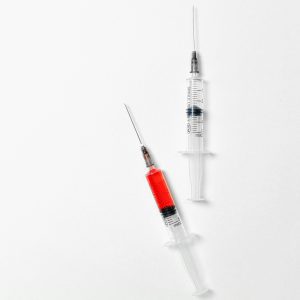
What Is Fever?
Fever is a physiological response of the body characterized by an elevated core temperature, usually in response to an infection, illness, or other underlying medical condition. It is a common symptom and a key component of the body’s defense mechanism against infections. The hypothalamus, a region in the brain, acts as the body’s thermostat and regulates normal body temperature. When the immune system detects an invader, such as bacteria or viruses, it releases chemicals that signal the hypothalamus to raise the body’s temperature.
Fever serves several purposes in the body’s defense against pathogens. The elevated temperature helps to enhance the activity of the immune system, making it more effective in combating the infection. Additionally, some microorganisms may be more sensitive to higher temperatures, aiding in their elimination. While fever itself is generally a protective response, extremely high temperatures can pose risks and may require medical attention.
Common symptoms accompanying fever include chills, sweating, and an increased heart rate. It’s important to monitor and manage fever, especially in vulnerable populations such as young children and the elderly, to prevent complications and ensure a swift recovery.
Brief History of Fever
The concept of fever and its association with illness has been recognized throughout human history. Ancient civilizations, such as the Egyptians, Greeks, and Romans, observed and documented febrile conditions. Hippocrates, often regarded as the father of medicine, described fever as a symptom rather than a disease itself, recognizing its connection to various ailments.
In medieval times, the understanding of fever was influenced by the theory of the four humors, proposed by Galen, a prominent Greek physician. It suggested that an imbalance in bodily fluids caused illness, including fevers. During the Renaissance, advancements in anatomy and the development of the scientific method gradually improved the understanding of fever. However, the true nature of infectious agents and the role of microbes in fever were not fully appreciated until the late 19th century with the groundbreaking work of scientists like Louis Pasteur and Robert Koch.
The discovery of antibiotics in the mid-20th century revolutionized the treatment of infectious diseases causing fever. Modern medicine has since made significant strides in understanding the molecular and cellular mechanisms underlying fever, contributing to more effective management and treatment strategies. Today, fever remains a crucial diagnostic tool, aiding in the identification and monitoring of various illnesses.
| Period | Key Developments in Understanding Fever |
|---|---|
| Ancient Civilizations | Observation of fever as a symptom; recognition of its association with illnesses. |
| Hippocratic Era | Hippocrates describes fever as a symptom; understanding of fever’s connection to diseases. |
| Medieval Times | Influence of the four humors theory; belief in bodily fluid imbalances causing fever. |
| Renaissance | Advancements in anatomy; gradual improvement in understanding the nature of fever. |
| 19th Century | Discovery of infectious agents and microbes; contributions by Louis Pasteur and Robert Koch. |
| Mid-20th Century | Development of antibiotics revolutionizes the treatment of infectious diseases. |
| Modern Era | Advances in molecular and cellular understanding of fever; improved management strategies. |
What Causes Fever?
Fever is primarily caused by the body’s response to an infection or other medical condition. The most common triggers for fever include:
- Infections:
- Bacterial, viral, fungal, or parasitic infections can stimulate the immune system, leading to the release of chemicals (pyrogens) that signal the hypothalamus in the brain to raise the body’s temperature.
- Inflammatory Conditions:
- Non-infectious inflammatory conditions, such as rheumatoid arthritis or inflammatory bowel diseases, can also induce fever as part of the body’s immune response.
- Autoimmune Disorders:
- Conditions where the immune system mistakenly attacks the body’s own tissues, such as lupus or certain types of arthritis, may lead to persistent or recurring fever.
- Certain Medications:
- Some medications, particularly certain antibiotics, can cause drug-induced fever as a side effect.
- Malignancies:
- Certain cancers can cause fever, either due to the body’s response to the cancer cells or as a side effect of cancer treatments.
- Heat-related Conditions:
- Exposure to extreme environmental temperatures or heat stroke can cause an elevation in body temperature.
It’s important to note that fever itself is not a disease but a symptom indicating an underlying health issue. The body’s natural response to an elevated temperature is a part of the immune system’s defense mechanism against infections, as higher temperatures can enhance the activity of immune cells. If someone experiences persistent or severe fever, it is crucial to consult with a healthcare professional to determine the underlying cause and appropriate treatment.
What Are the Symptoms of Fever?
Fever is often accompanied by a range of symptoms, and the severity and specific manifestations can vary depending on the underlying cause. Common symptoms associated with fever include:
- Elevated Body Temperature:
- The hallmark symptom of fever is an increase in body temperature above the normal range, which is typically around 98.6°F (37°C). Fever is defined as a body temperature of 100.4°F (38°C) or higher.
- Chills and Shivering:
- Many individuals with fever experience chills and shivering as the body tries to generate heat to match the elevated temperature.
- Sweating:
- Following the chills, sweating is a common response to fever as the body attempts to cool down.
- Headache:
- Fever can often be accompanied by a headache, which may be due to the release of certain chemicals in the body or the general stress on the system.
- Muscle Aches:
- Aches and pains in the muscles and joints are common during fever and may contribute to feelings of discomfort.
- Fatigue:
- Fever can lead to increased fatigue and weakness as the body diverts energy resources toward fighting the underlying cause.
- Loss of Appetite:
- Many people with fever may experience a reduced desire to eat.
- Dehydration:
- Elevated body temperature can lead to increased fluid loss through sweating, potentially causing dehydration. It’s important to stay well-hydrated during a fever.
It’s crucial to recognize that fever itself is not a disease but a symptom of an underlying condition. If someone experiences persistent or high fever, or if additional concerning symptoms arise, it is advisable to seek medical attention for a thorough evaluation and appropriate management.
How is Fever Diagnosed?
Fever is typically diagnosed based on the measurement of body temperature. The most common method is using a thermometer to assess the body temperature. Here are some key points regarding the diagnosis of fever:
- Temperature Measurement:
- A normal body temperature is around 98.6°F (37°C). Fever is generally defined as a body temperature of 100.4°F (38°C) or higher. Temperatures can be measured orally, rectally, under the arm (axillary), or in the ear (tympanic). Rectal measurements are generally considered the most accurate.
- Clinical Assessment:
- In addition to temperature measurement, healthcare professionals consider other clinical signs and symptoms when assessing fever. These may include chills, sweating, headache, muscle aches, and an overall sense of discomfort.
- Underlying Cause:
- Identifying and diagnosing the underlying cause of the fever is crucial. This often involves a thorough medical history, physical examination, and sometimes laboratory tests. Blood tests, imaging studies, and other diagnostic tools may be used to determine the specific cause, such as infections, inflammatory conditions, or other medical issues.
- Duration and Pattern:
- The duration and pattern of the fever (e.g., continuous, intermittent, or remittent) can provide additional information to help guide the diagnosis.
- Patient History:
- Information about recent travel, exposure to sick individuals, vaccination history, and other relevant details are important in understanding the context of the fever.
It’s essential to consult with a healthcare professional for a proper diagnosis and management if you or someone else is experiencing persistent or severe fever. Self-diagnosis and treatment may not address the underlying cause, and some conditions requiring medical attention may present with fever as a primary symptom.
What Are the Different Types of Fever?
Fever can be classified into various types based on its characteristics, duration, and underlying causes. Here are some common types of fever:
- Continuous Fever:
- Steady Elevation: The body temperature remains consistently elevated without significant fluctuations.
- Intermittent Fever:
- Temperature Spikes:* Periods of fever alternate with periods of normal body temperature.
- Remittent Fever:
- Fluctuations: The body temperature remains elevated but varies throughout the day, with fluctuations exceeding 2°C (3.6°F).
- Pel-Ebstein Fever:
- Cyclic Pattern: Characterized by fever spikes that occur at regular intervals, often seen in certain types of lymphomas.
- Undulating Fever:
- Wavelike Pattern: The fever pattern shows a gradual increase and decrease in a repeating cycle.
- Low-Grade Fever:
- Mild Elevation: The body temperature is elevated but stays below 100.4°F (38°C).
- Hectic Fever:
- Wide Fluctuations: Marked by wide swings in body temperature between fever and normal levels.
- Febrile Seizures:
- Common in Children: Fevers that trigger seizures in young children, often associated with rapid temperature spikes.
- Drug-Induced Fever:
- Medication Reaction: Some medications can cause fever as a side effect, unrelated to an underlying infection or illness.
- Travel-Related Fever:
- Associated with Travel: Fever occurring after traveling to regions with endemic diseases, suggesting a possible infectious cause.
- Postoperative Fever:
- After Surgery: Fever that develops after a surgical procedure, often due to the body’s inflammatory response to surgery.
- Fever of Unknown Origin (FUO):
- Prolonged and Unexplained: When the cause of fever cannot be identified after a thorough investigation lasting a specified period.
Understanding the type of fever and its accompanying symptoms can aid healthcare professionals in determining the underlying cause and appropriate treatment. It’s important to consult with a healthcare provider for a proper diagnosis and management of fever, especially if it persists or is associated with concerning symptoms.
How is Fever Treated?
The treatment of fever typically focuses on addressing the underlying cause and managing symptoms. Here are general strategies for treating fever:
- Addressing Underlying Cause:
- Identify and treat the specific condition or infection causing the fever. This may involve antibiotics for bacterial infections, antiviral medications for viral infections, or other targeted treatments based on the diagnosis.
- Medications to Reduce Fever:
- Antipyretic medications, such as acetaminophen (Tylenol) or ibuprofen (Advil, Motrin), can be used to lower body temperature and alleviate associated symptoms like headache and muscle aches. However, it’s important to follow dosage recommendations and consult with a healthcare professional, especially in certain populations like children and individuals with underlying health conditions.
- Stay Hydrated:
- Fever can lead to increased fluid loss through sweating, so it’s important to stay well-hydrated. Drink plenty of fluids, including water, herbal teas, and clear broths.
- Rest:
- Allow the body to rest and conserve energy. Avoid strenuous activities and get adequate sleep to support the immune system.
- Cooling Measures:
- Use physical cooling measures, such as applying a damp cloth to the forehead or taking a tepid bath, to help reduce body temperature. Avoid using very cold water, as it may cause shivering, which can increase body temperature.
- Comfort Measures:
- Use comfortable clothing and bedding. Maintain a comfortable room temperature, and use fans or cool compresses as needed.
- Monitor Symptoms:
- Keep track of temperature changes and the presence of any new or worsening symptoms. Seek medical attention if the fever persists, is very high, or is associated with severe symptoms.
It’s important to note that fever itself is not a disease but a symptom of an underlying condition. While treating the fever, healthcare professionals aim to manage the root cause to promote a faster recovery. If you or someone else experiences persistent or severe fever, or if there are concerns about associated symptoms, it’s advisable to consult with a healthcare provider for a thorough evaluation and appropriate guidance.
Can Fever be Prevented?
Fever itself is a natural response of the body to infections or other underlying medical conditions, and it is not something that can be entirely prevented. However, steps can be taken to reduce the risk of certain infections and minimize the likelihood of fever:
- Practice Good Hygiene:
- Wash hands frequently with soap and water, especially after using the bathroom, before eating, and after being in public places. This helps prevent the spread of infectious agents.
- Vaccination:
- Stay up-to-date on vaccinations to protect against vaccine-preventable diseases. Vaccines can significantly reduce the risk of certain infections that may cause fever.
- Food Safety:
- Handle and cook food properly to reduce the risk of foodborne illnesses. This includes washing hands, utensils, and surfaces, and avoiding the consumption of raw or undercooked foods.
- Avoid Close Contact with Sick Individuals:
- Limit close contact with people who are sick, especially during periods of illness outbreaks or when contagious diseases are prevalent.
- Practice Respiratory Hygiene:
- Cover the mouth and nose when coughing or sneezing, and dispose of tissues properly. This helps prevent the spread of respiratory infections.
- Maintain a Healthy Lifestyle:
- Adopt a healthy lifestyle that includes regular exercise, a balanced diet, and adequate sleep. A strong immune system can better resist infections.
- Travel Precautions:
- Take precautions when traveling, especially to regions where certain infectious diseases are prevalent. This may include getting relevant vaccinations and practicing preventive measures.
- Stay Informed:
- Stay informed about health advisories and recommendations from public health authorities, especially during times of increased risk of infectious diseases.
While these measures can reduce the risk of certain infections, it’s important to recognize that fever can still occur even with preventive efforts. If fever does develop, prompt medical attention is recommended to identify and address the underlying cause. Additionally, anyone experiencing persistent or severe fever should seek medical guidance for proper evaluation and treatment.
Is Fever Life-Threatening?
Fever itself is not typically life-threatening. In fact, fever is often a natural and beneficial response of the body to infections or other illnesses. It is a sign that the immune system is actively working to fight off the underlying cause of the fever, such as a bacterial or viral infection.
However, extremely high temperatures (above 104°F or 40°C) can lead to serious complications, and prolonged or persistent fever may indicate a severe underlying condition that requires medical attention. In some cases, fever can be a symptom of a medical emergency. Some conditions associated with high fever that may pose risks include:
- Heatstroke:
- Exposure to high temperatures without adequate cooling measures can lead to heatstroke, which is a medical emergency.
- Severe Infections:
- Infections that are not promptly treated can lead to complications, and certain infections can cause high and persistent fever.
- Neurological Issues:
- Very high temperatures can affect the central nervous system, leading to seizures or other neurological complications.
- Dehydration:
- Fever can contribute to increased fluid loss through sweating, potentially leading to dehydration if not addressed.
It’s crucial to monitor fever closely, especially in vulnerable populations such as infants, elderly individuals, or those with weakened immune systems. If fever is associated with severe symptoms, difficulty breathing, persistent vomiting, confusion, or other concerning signs, immediate medical attention should be sought.
While fever itself is generally a protective response, the underlying cause of the fever should be identified and treated. If you or someone else experiences high or persistent fever, consult with a healthcare professional for a proper evaluation and appropriate management.
Websites and Articles to Delve into the Aspects of Fever
These websites, including Cleveland Clinic, Mayo Clinic, Penn Medicine, Wikipedia, WebMD, Medical News Today, Healthdirect Australia, Johns Hopkins Medicine, and Harvard Health Publishing, offer comprehensive and reliable information on fever, covering its definition, causes, symptoms, treatments, and when to seek medical attention.
- Cleveland Clinic:
- Comprehensive information about fever, including definition, causes, symptoms, and when to seek medical attention.
- Mayo Clinic:
- Mayo Clinic’s page covers symptoms, causes, risk factors, complications, and when to seek medical advice, emphasizing treating the underlying cause.
- Penn Medicine:
- Outlines basics of fever, including causes, symptoms, and when to see a healthcare professional, likely with information specific to Penn Medicine.
- Wikipedia:
- A general overview of fever, covering definition, types, causes, symptoms, and treatment. It’s a comprehensive and community-sourced resource.
- WebMD:
- Explores causes, symptoms, treatment, and when to seek medical attention, providing user-friendly and practical information for the general public.
- Medical News Today:
- Covers the definition, causes, symptoms, and treatment options for fever, potentially including insights into recent research or developments.
- Healthdirect Australia:
- Likely offers information tailored to an Australian audience, covering symptoms, causes, and when to seek medical advice.
- Johns Hopkins Medicine:
- May provide insights into Johns Hopkins Medicine’s approach to diagnosing and managing fever, including information on when to seek medical attention.
- Harvard Health Publishing:
- Offers information on treating fever in adults, likely including recommendations on medications and lifestyle.
- Mayo Clinic First Aid:
- Likely provides practical advice on what to do at home when someone has a fever, including temperature-reducing techniques and when to seek emergency care.
Please note that the content on these websites may change, and it’s advisable to consult healthcare professionals for personalized advice.
Summary
Fever is a physiological response characterized by an elevated body temperature, typically in response to infections, inflammation, or other medical conditions. The body’s immune system releases chemicals that signal the brain’s hypothalamus to increase the temperature, promoting the activity of immune cells and potentially inhibiting the growth of harmful microorganisms.
Common symptoms accompanying fever include chills, sweating, headache, muscle aches, and fatigue. While fever itself is not a disease, persistent or high fever may indicate an underlying medical issue requiring attention. Management often involves addressing the root cause, staying hydrated, and, if necessary, using medications to alleviate symptoms.
Fever is a crucial aspect of the body’s defense mechanism, aiding in the fight against infections and supporting overall health. Understanding its underlying causes and appropriate management is essential for promoting a swift recovery and preventing potential complications.






